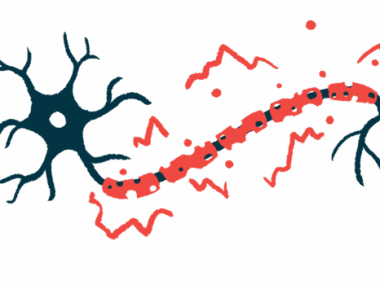Scientists ID 10 NEFL Gene Mutations, May Help in CMT Diagnosis
Written by |

In a study spanning 15 years, South Korean researchers investigated the clinical, genetic, and imaging features of Charcot-Marie-Tooth (CMT) disease in more than 1,100 families with this group of peripheral nervous system disorders who underwent gene sequencing focused on the NEFL gene.
The team identified 10 mutations in the NEFL gene, three of which had never been reported.
These findings may help in the evaluation of NEFL mutations and aid in the diagnosis of different CMT subtypes, they noted.
The study, “Phenotypic heterogeneity in patients with NEFL-related Charcot–Marie–Tooth disease,” was published in the journal Molecular Genetics & Genomic Medicine.
Mutations in the neurofilament light-chain polypeptide (NEFL) gene are a cause of CMT, including a form of the so-called axonal CMT (CMT2E) and another of demyelinating CMT (CMT1F), They also are a cause of an intermediate subtype that presents both axonal (nerve fiber damage) and demyelinating — loss of myelin, the insulating layer of nerve fibers — features called CMTDIG. Notably, CMTDIG is characterized by slow progression and variable age at disease onset.
Neurofilaments are nerve cell-specific components that control size and shape. Mutations in NEFL affect the neurofilament network, impacting transport in nerve fibers, as well as the maturation of regenerating nerve fibers. As such, they can lead to diverse CMT manifestations.
In this study, the scientists assessed the clinical features of 37 CMT patients — 20 males and 17 females — from 17 families carrying disease-causing or likely-disease-causing mutations in the NEFL gene.
Data were collected from a group of 1,889 CMT patients through gene sequencing. Analysis revealed the presence of 10 mutations in the NEFL gene, three of which were deemed new as they had not been reported in genetic databases. The three new mutations are now known as p.L312P, p.Y443N, and p.K467N.
The p.L312P mutation was found in a CMTDIG patient, while the other two new mutations were found in individuals with CMT2E.
Four previously reported mutations were identified in CMT1F patients, while two other mutations besides p.L312P were found in participants with CMTDIG.
One particular mutation — p.E396K — was detected in both CMT1F and CMTDIG patients. Two other mutations in addition to p.Y443N and p.K467N were found in the CMT2E group.
Most patients carrying NEFL mutations showed the classical CMT feature of peripheral neuropathy, or damage to the nerves outside the brain and spinal cord, as well as additional symptoms. These other symptoms included delayed walking, lack of coordination, difficulty swallowing, problems in speech, dementia, drooping of the upper eyelid, waddling gait, tremor, and hearing loss.
In five patients, motor abnormalities were seen early on, at or before 3 years of age. Issues with coordination were the most common symptom in NEFL-related CMT patients, detected in 78% of those with CMT1F, 79% in the CMTDIG group, and half of CMT2E patients.
Neuroelectrophysiological studies — which assess how electrical signals are transmitted through nerves in the body — showed that the responses of the peroneal nerve were often markedly reduced in CMT1F patients. The peroneal nerve is a branch of the sciatic nerve, which supplies movement and sensation to the lower legs, feet, and toes. In contrast, only one of four CMT2E patients showed similar alterations, while the CMTDIG group showed intermediate results.
MRI analyses of the legs revealed various degrees of fat infiltration in muscle. Comparing patients with a similar disease duration (19 to 20 years) but different clinical features, one patient with CMT1F showed severe fat infiltration in the thigh, while one participant with CMT2E and another with CMTDIG showed mild or minimal fat infiltration. In the calf muscles, the same patients showed distinct patterns of fat infiltration, affecting all muscle compartments in the participant with CMT1F.
Overall, “this study’s clinical, genetic, and neuroimaging results could be helpful in the evaluation of novel NEFL variants and differential diagnosis against other CMT subtypes,” the scientists concluded.






